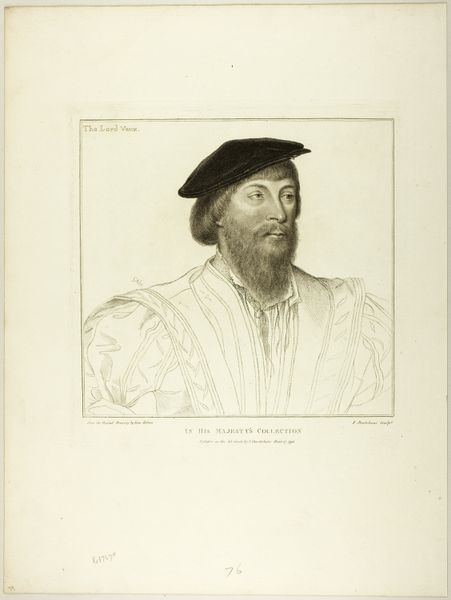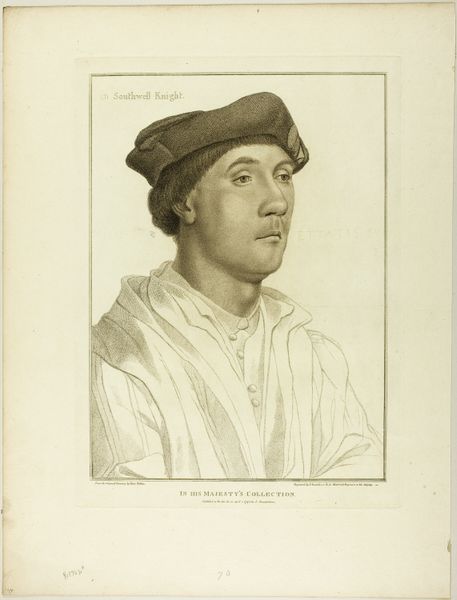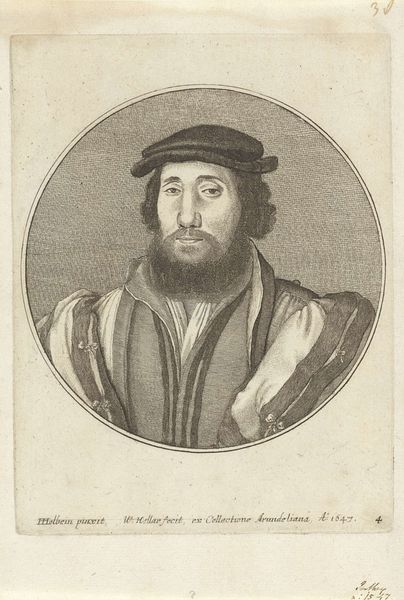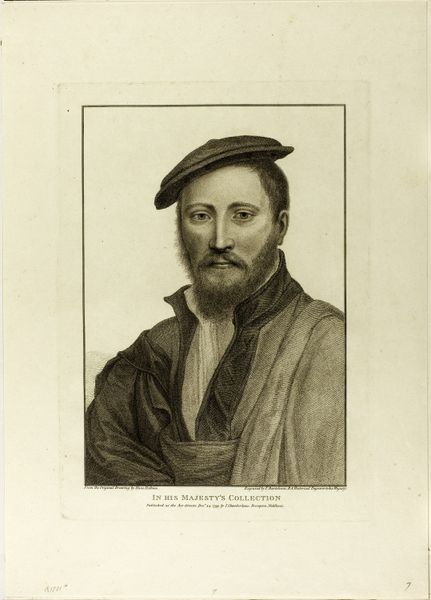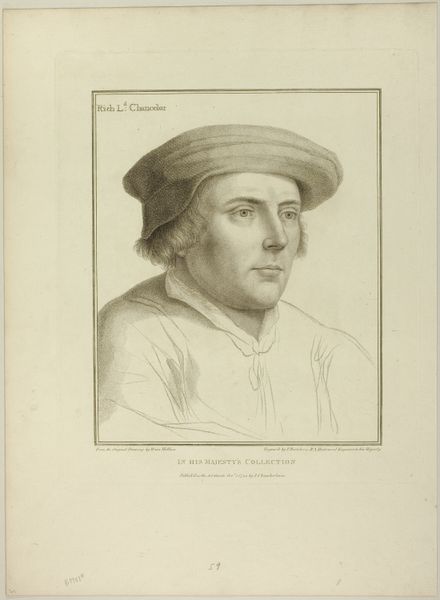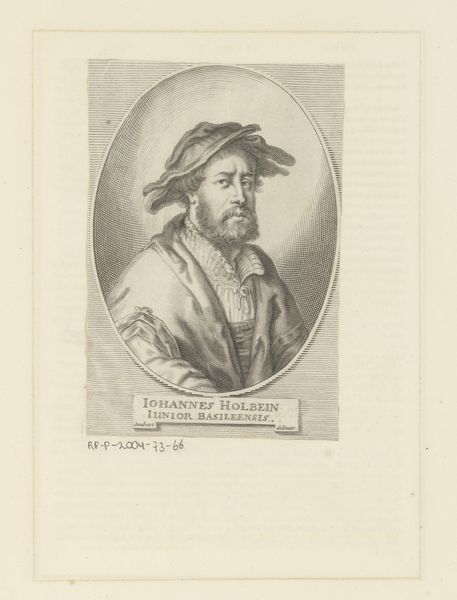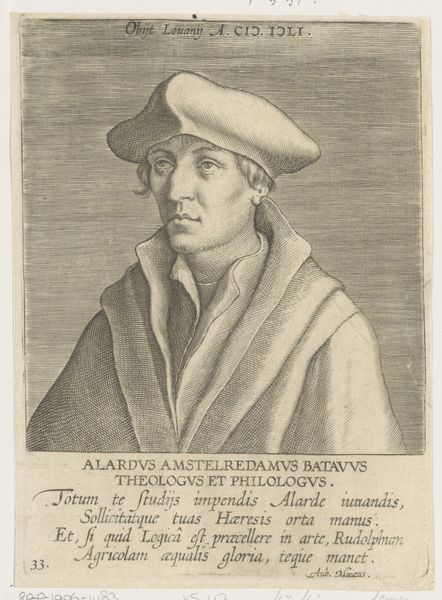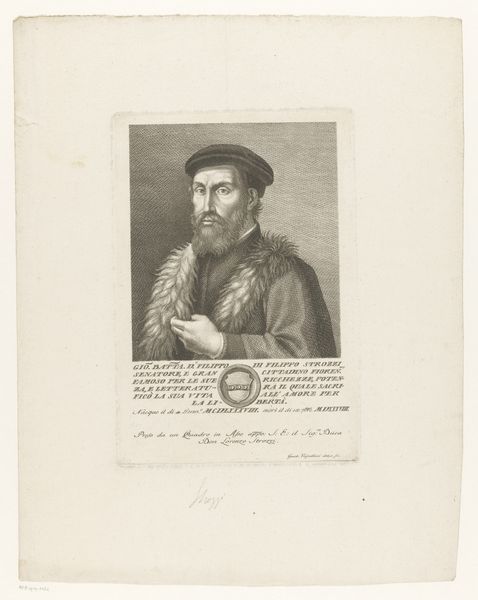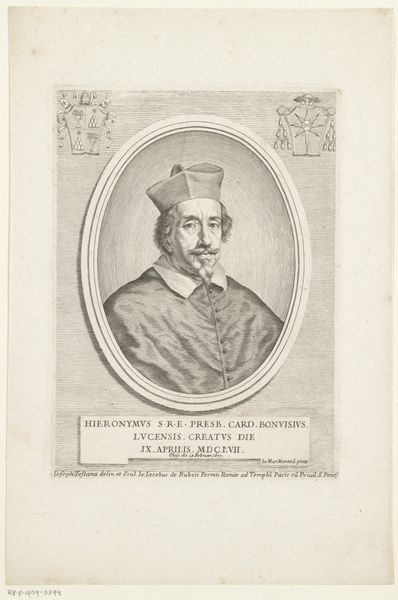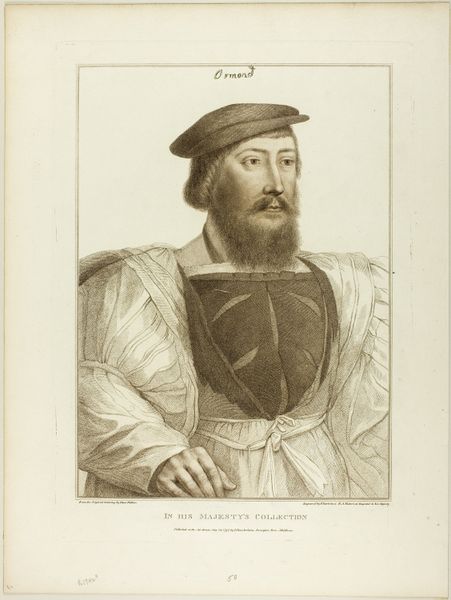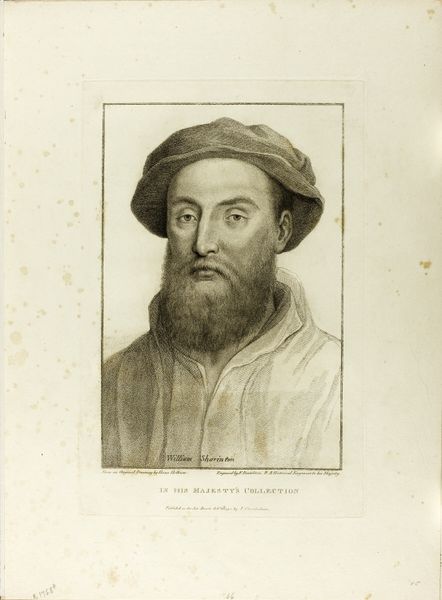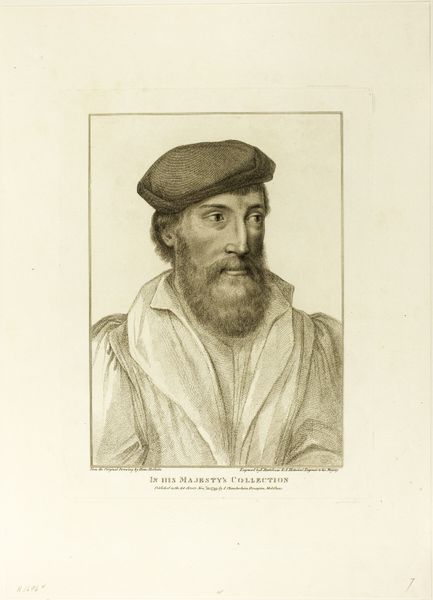
drawing, print, paper, engraving
#
portrait
#
drawing
# print
#
paper
#
engraving
Dimensions: 237 × 205 mm (image); 305 × 226 mm (plate); 442 × 338 mm (sheet)
Copyright: Public Domain
Curator: Let's turn our attention to this striking portrait, "Sir Thomas Strange," created around 1793 by Francesco Bartolozzi. It's a print, an engraving on paper, currently held here at the Art Institute of Chicago. What strikes you first about this image? Editor: The quietness. It's a very reserved, almost melancholy portrayal. The subject’s gaze is averted, and there's a somber quality to the shading. What can you tell me about the social context surrounding the subject? Curator: Sir Thomas Strange had a career marked by complexity. Originally from Scotland, he pursued a legal career and became a noted judge. However, he is a figure who found himself embroiled in controversies as the British sought to administer justice across newly acquired colonial territories, which surely had impact on how Bartolozzi depicted his likeness. The original artwork for this engraving was by Hans Holbein. Editor: Holbein... well, the choice to reproduce a drawing by Holbein resonates. Holbein, famed for his meticulous, psychologically insightful portraits. It suggests a deliberate effort to associate Sir Thomas with that legacy of shrewd observation and courtly decorum, even if such was questionable, according to you. Notice, for instance, the very particular way his hat sits and falls upon the frame of his eyes. I read the choice of the object being worn as more than fashion statement, instead working like a shield of a sartorial choice. Curator: That's a compelling interpretation. I would add that portraiture, especially during this period, was rarely objective. They served as tools for constructing and projecting social status, or in this case, perhaps reclaiming it in the public eye. In many ways Bartolozzi’s portrait captures the political nuances of image-making in the 18th century, an intentional crafting of public perception, rather than private sentiments. Editor: And the very nature of the print itself, an engraving allows for wider dissemination. It moves beyond a painting or a single drawing to allow this image of Sir Thomas Strange to enter the broader public consciousness, further emphasizing this calculated attempt to sculpt his legacy. Is the collection the print belongs to signposting towards particular allegiances to colonial agendas of the time? Curator: "In His Majesty's Collection" it says just below the image, further enhancing the notion of legacy-building, associating Strange with the legitimacy and power of the Crown. But let us pause and give room for future museum visitors to form their own impression. Editor: Indeed, art persists in triggering dialogue. This portrait of "Sir Thomas Strange" may simply serve as a lens through which one understands that even still imagery has a life of its own that far surpasses the initial context it was commissioned in.
Comments
No comments
Be the first to comment and join the conversation on the ultimate creative platform.
